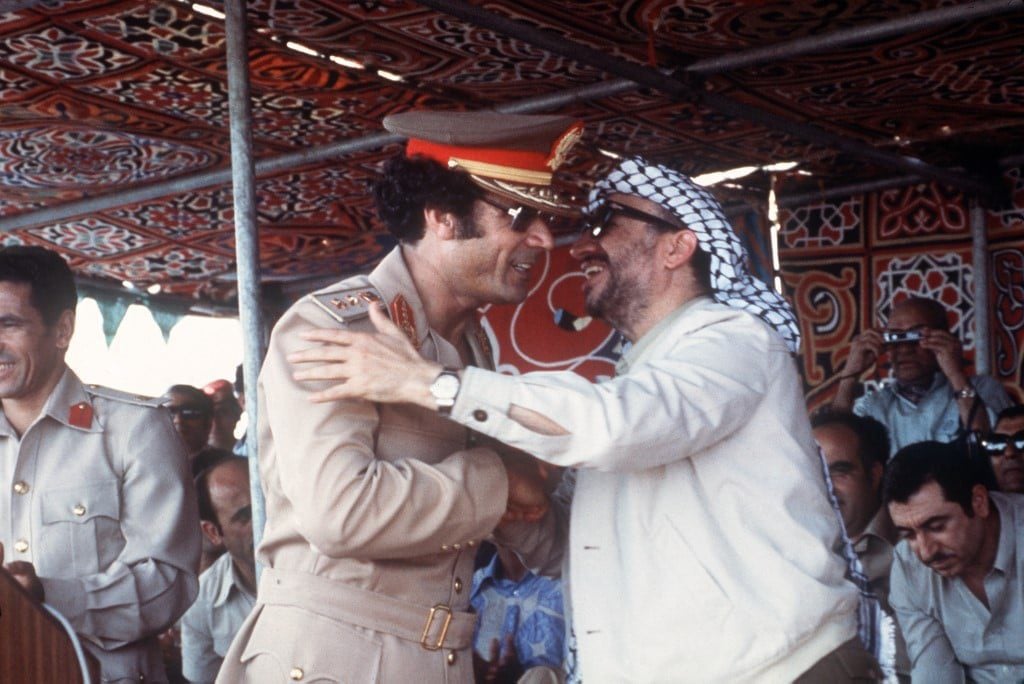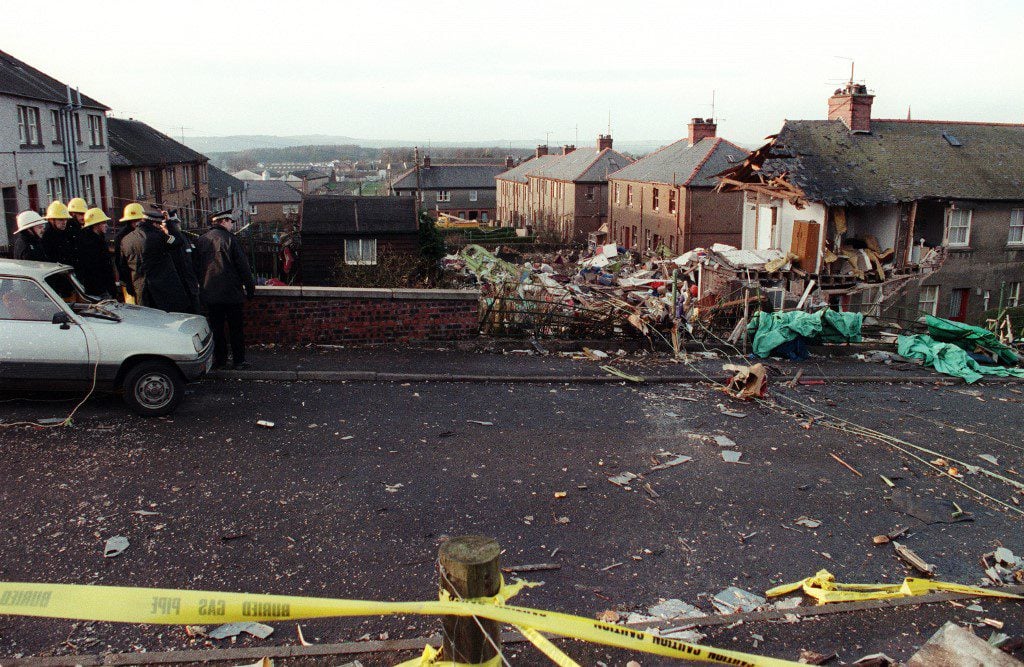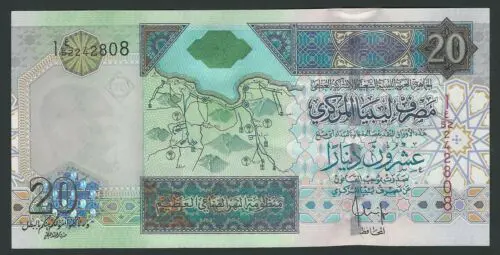
Foreign relations
Khalif, tu’raf, ‘Be different, then they know you’, says an Arabic proverb. In Qaddafi’s case, this went beyond the eccentric personality cult at the centre of his regime to the adoption of unpredictable international policies.
Publicly, Qaddafi emphasized some consistent themes: opposition to Israel, support for revolution against conservative regimes, dislike of imperialism, and desire for regional unity.
The reality was less coherent. In the 1970s and 80s he supported many foreign rebel and opposition movements, including the IRA, Palestinian groups, the Western Saharan liberation movement (POLISARIO), the Filipino Moro Liberation Front, and the American Black Muslims. But he quickly abandoned causes that were no longer convenient or he fell out with their leaders. When Arafat signed the Oslo Accords with Israel, he expelled Palestinians from Libya. The expulsion of Western Saharans followed his rapprochement with Morocco.
Support for left-wing rebels in Latin America convinced US President Reagan that Qaddafi was a ‘mad dog’. Reagan broke diplomatic relations with Libya four months after taking office and shot down Libyan planes in the Gulf of Sirte in August 1981. In 1982 Reagan imposed a trade embargo on Libya. The inclusion of oil cut Libyan revenues by a third.
Qaddafi’s meddling in the Chadian civil war led him to occupy the Aouzou strip in northern Chad, reportedly rich in uranium. When Qaddafi ordered the invasion of Chad in December 1980, the commander on the southern frontier was Colonel Khalifa Haftar, who remained in Chad until 1981. It was a disastrous war: the Libyan army quickly began losing large numbers of men. Haftar returned to the Chad war in 1987, though not as overall commander. Later that year, Libyan troops retreated. They had lost between 8,000 and 10,000 soldiers and many captives, Haftar among them; he later claimed that his experiences in Chad led him to reject the regime.
Plans for Arab Unity
The Libyan national identity was weak when Qaddafi took over. He and his close supporters were enthusiastic about Arab nationalism. Hence, he repeatedly tried to unite Libya with other countries. Brief theoretical unions were set up with Egypt and Syria (1971, Federation of Arab Republics); Sudan; Tunisia (1974, Arab Islamic Republic); Algeria, Morocco, Tunisia, and Mauritania (1989, Arab Maghreb Union, a planned free-trade bloc).
These attempted unions came to nothing and, in frustration, Qaddafi turned to sub-Saharan Africa. He supported Idi Amin in Uganda, Jean-Bédel Bokassa in the Central African Empire, and liberation movements in Zimbabwe, Angola, Mozambique, and South Africa. In the 1980s, Libya supported rebel leaders such as Foday Sankoh of the Revolutionary United Front in Sierra Leone and Charles Taylor of Liberia’s National Patriotic Front. They received military training in Libya and succeeded in overthrowing the incumbent governments of their countries. More generally, Qaddafi tried to increase Libyan influence in sub-Saharan Africa through missionary work by way of the Islamic Call Society. Libya sent development aid to African governments to improve infrastructure, agriculture, and drinking water and gave African students scholarships to study in Libya.
In 2002 Qaddafi helped set up the African Union to replace the Organization of African Unity. In 2007 and 2009, as chairman of the African Union, Qaddafi proposed establishing the Pan-African United States of Africa. In 2008 a meeting of more than 200 African kings and traditional rulers in Benghazi crowned him ‘king of kings’ of Africa.
Alleged actions abroad and sanctions
The revolutionary committees began to operate abroad, running death squads that attacked opposition exiles in Athens, Bonn, London, Milan, and Rome. The climax came in 1984, at the Libyan embassy in London – the “People’s Bureau”. While Libyan exiles protested outside, a shot was fired from inside the embassy killing British police officer Yvonne Fletcher.
In 1986, the United States accused Libya of involvement in Palestinian attacks on airports in Rome and Vienna. In April 1986, when a bomb exploded in a Berlin nightclub, injuring over 200 and killing two, Reagan sent US warplanes to attack Qaddafi’s residences in addition to military facilities in Tripoli and Benghazi city. The raids killed 130 people, wounded two of Qaddafi’s sons, and allegedly killed an adopted daughter.

The 1980s ended with the destruction of Pan Am flight 103 over the Scottish town of Lockerbie (1988) and of a French UTA aircraft over Niger (1989). More than 400 people were killed in these attacks. Although other theories about the attack circulated later, blaming the Popular Front for the Liberation of Palestine (PFLP) and East German intelligence, in November 1991 the US and British governments accused two Libyans, Abdelbaset al-Megrahi and Lamin Khalifa Fhimah, of committing the Lockerbie bombing, and the UN Security Council demanded their extradition. A decade of international isolation began.
In April 1992 the UN announced sanctions against Libya, unless the two Lockerbie suspects were extradited. This was not immediately effective because Qaddafi had already taken precautions to protect his currency reserves and Libya continued to produce oil at a high rate. At the time, Libya was one of the fifteen largest oil-exporting countries in the world and derived 99 per cent of its export earnings from oil. But the price of oil was falling even though production of oil held up, and sanctions isolated Libya, which inhibited further growth of oil production.
Libyans could not leave the country because air links were almost entirely cut, and planes could not be maintained. The import of commodities became very hard. In the early 1980s arms purchases were often worth more than $3 billion a year. In the early 1990s, they shrank to virtually nothing and disappeared by the end of the decade. Lack of foreign exchange led to the cancellation of several large development projects.
The Great Manmade River
The biggest development project of all, the Great Manmade River (GMMR), was mostly completed just in time to escape the sanctions. Development had begun in the early 1980s as a plan to bring drinking water (‘fossil water’) from beneath the deserts of the south of Libya to the populated coastal region through enormous underground pipes. Qaddafi, who had once declared that there was no great people that did not have a great river, saw the GMMR as his great showcase project, and nothing was going to stop it. Even sanctions would not block its development, so the thinking was. Phase 1 began in the early 1980s and Phase 2 in 1989. It started to come on stream just as sanctions were imposed. The first water reached Ajdabiyya in 1989 and Tripoli in 1996.

There was increasing unrest inside Libya, particularly from the Banu Walid tribe, some of whose members were executed for their role in an alleged coup. There were riots in Misrata and Tobruk in 1993 and attempts on Qaddafi’s life by Islamists in 1995 and 1998.
As early as 1988 Qaddafi had made a point of criticizing the revolutionary committees for their repressive behaviour and issued laws allowing freedom of expression. But these were more posturing than real changes. Physical abuses, including severe torture, got worse in the 1990s, as international human rights organizations documented.
Lifting of sanctions
At the end of the 1990s, Libya was a pariah state, imprisoned behind sanctions. But as Islamist movements grew, western countries were anxious to reopen links. The new British government of Tony Blair (elected in 1997) negotiated an agreement under which the Libyan government handed over the two Lockerbie suspects for trial at the International Criminal Court (ICC) in The Hague. Sanctions were quickly suspended and when the trial ended in 2001, al-Megrahi was found guilty and sentenced to life imprisonment in Scotland, and Fhimah was acquitted.
The attacks on New York on 11 September 2001 boosted the international realignment. Qaddafi was among the first Arab leaders to condemn Usama bin Laden. Libya joined the global fight against terrorism. Qaddafi took further steps to cooperate with the western powers after the American invasion of Iraq in 2003, fearing that he might be the next target. In August 2003 he agreed to pay compensation and semi-recognise the crime at Lockerbie. In December he renounced weapons of mass destruction and restored diplomatic relations first with Britain and then with the US. Blair (2004) and Condoleeza Rice (2008) visited Libya and Qaddafi apparently built up a crush on Rice – tacky love cards were found in the wreckage of his palace after he fell from power.
Islamism in Libya
Qaddafi posed as an Islamic leader but most Islamist movements in the 1990s rejected him.
Libyan Arab Afghans, those who had fought in Afghanistan, began returning in the 1990s. They set up the Libyan Islamic Fighting Group (LIFG) that planned to overthrow the ‘Pharaoh’ Qaddafi and bring Islamic rule. The LIFG was a small group (by 1994 it had some 300 members) but it set up cells in each region.
The more moderate Muslim Brotherhood and, in Benghazi, the Islamic Martyrs’ Movement began penetrating the mosques. In 1995 the LIFG almost collapsed when the regime chased it down, broke its cell structure and imprisoned many members in the notorious Abu Salim prison in Tripoli. Conditions there were so awful that in June 1996 Islamists in Abu Salim rebelled. Human Rights Watch estimated the regime killed 1,270 prisoners in the massacre that followed.
The remnants of the LIFG fled to the Jebel al-Akhdar, the hilly region of Cyrenaica, and began guerrilla attacks. In November 1996, after an LIFG member threw a grenade at Qaddafi in the desert town of Brak, the Revolutionary Committees crushed the LIFG, paraded the corpses of dead militants through the streets and forced the families of its members to help hunt them down.
In March 1997 a collective punishment law, “the Charter of Honour,” denied families or tribes of dissidents access to services, such as water or electricity.
In 1998, the LIFG leadership gave up, called an end to the struggle and what was left of the group fled abroad, many to Afghanistan and others to Europe. The regime also crushed the Muslim Brotherhood.
Qaddafi was prepared to bring other Islamists under his regime’s umbrella. In the 1990s, a Salafi group, the Madkhalis, led by an aged Saudi sheikh Rabi’ ibn Hadi Umair al-Madkhali, spread to Libya and won many followers. The movement was radical in the personal sense of individuals strictly abiding by Islamic teaching and law and it advocated strict obedience to rulers. Rebellion was denounced, as was any form of democratic participation in government. Thus although Madkhalis were active, they usually supported the Qaddafi regime and rejected both jihadism and the Muslim Brotherhood.
At first, the Libyan security services were very suspicious of Madkhali Salafism. But the regime soon realised the advantages of a Salafi ideology that rejected political activism. It was given space to flourish as a counterweight to the LIFG and other jihadist groups. In the 2000s, Saadi Qaddafi, Qaddafi’s son, built a relationship with Madkhali mosques in Tripoli and their imams and grew a Madkhali-style beard. Madkhali Salafism won adherents in some of the poor suburbs of Tripoli.
Qaddafi’s children
The new century coincided with a new factor in Libyan politics: the emergence of Qaddafi’s children as political actors.
In 1990, against the background of the austerity brought about by sanctions, Muhammad, the son of Qaddafi’s first wife, reached the age of twenty. Five others followed over the next seven years. In the early 2000s, Qaddafi’s children became seemingly ubiquitous. All of them were enthusiastic pleasure seekers – none more so than Hannibal, who studied maritime management at institutions in Denmark and Egypt and amused himself as a playboy with his wife, a former Lebanese model. Saadi, who aspired to be a footballer, achieved a very minor career in Italian football teams in which Libyan money was heavily invested. Others combined their social lives with more serious intent.
Muhammad accumulated wealth – among other enterprises, he controlled the mobile phone sector. Khamis dedicated himself to a full-time army career, studied at the Frunze Military Academy in the Soviet Union and returned to command an elite brigade in the army. Mutassim created a personal army brigade and in 2007 became National Security Advisor, a post created for him. Aisha studied law at Tripoli University and then in Paris and took on public roles as a UNDP ambassador and organisers of charity work.
Saif al-Islam studied for higher degrees in Vienna and at the London School of Economics (LSE), which also received substantial donations from Libyan sources. He saw himself as the chosen successor of his father and he carefully fashioned an image as a defender of liberty. Saif al-Islam sponsored a visit to Libya by Human Rights Watch and intervened to have an investigation into the Abu Salim massacre. He also headed the Qaddafi International Foundation for Charity Associations and the Qaddafi Foundation for Development. But the actual changes were few, and it seemed that all this was part of Saif al-Islam’s positioning himself to take over from his father.
احين When Qaddafi’s children came of age they increasingly took possession of the state’s military and economic machinery, intermarrying with families who dominated the Jamahiriya. Source: C.R. Pennell

